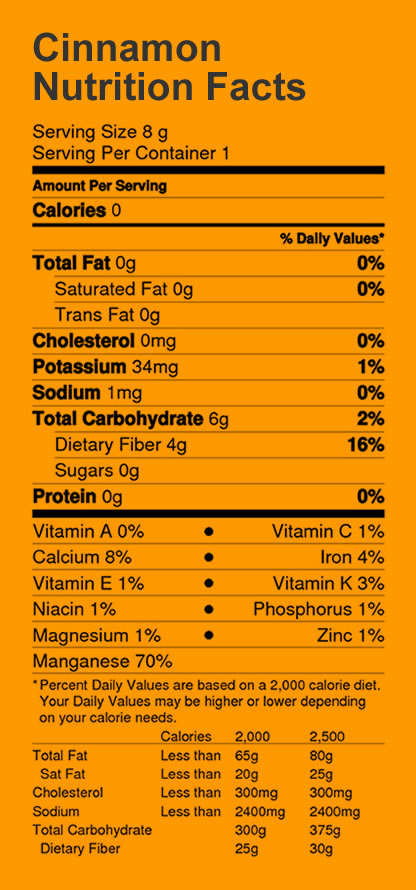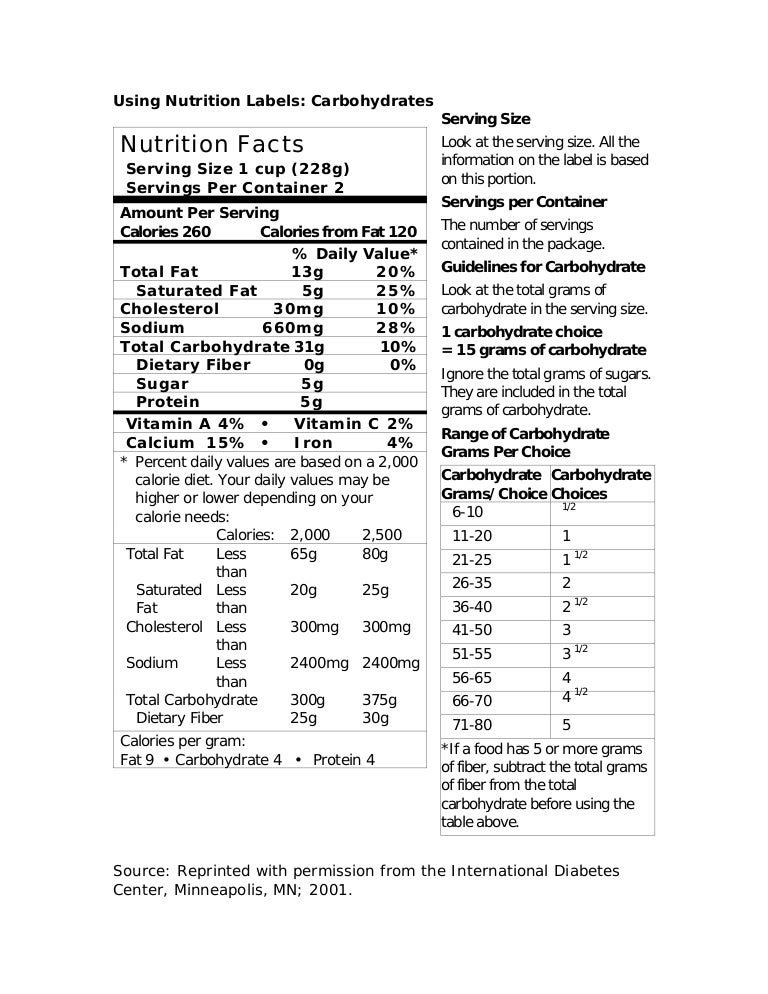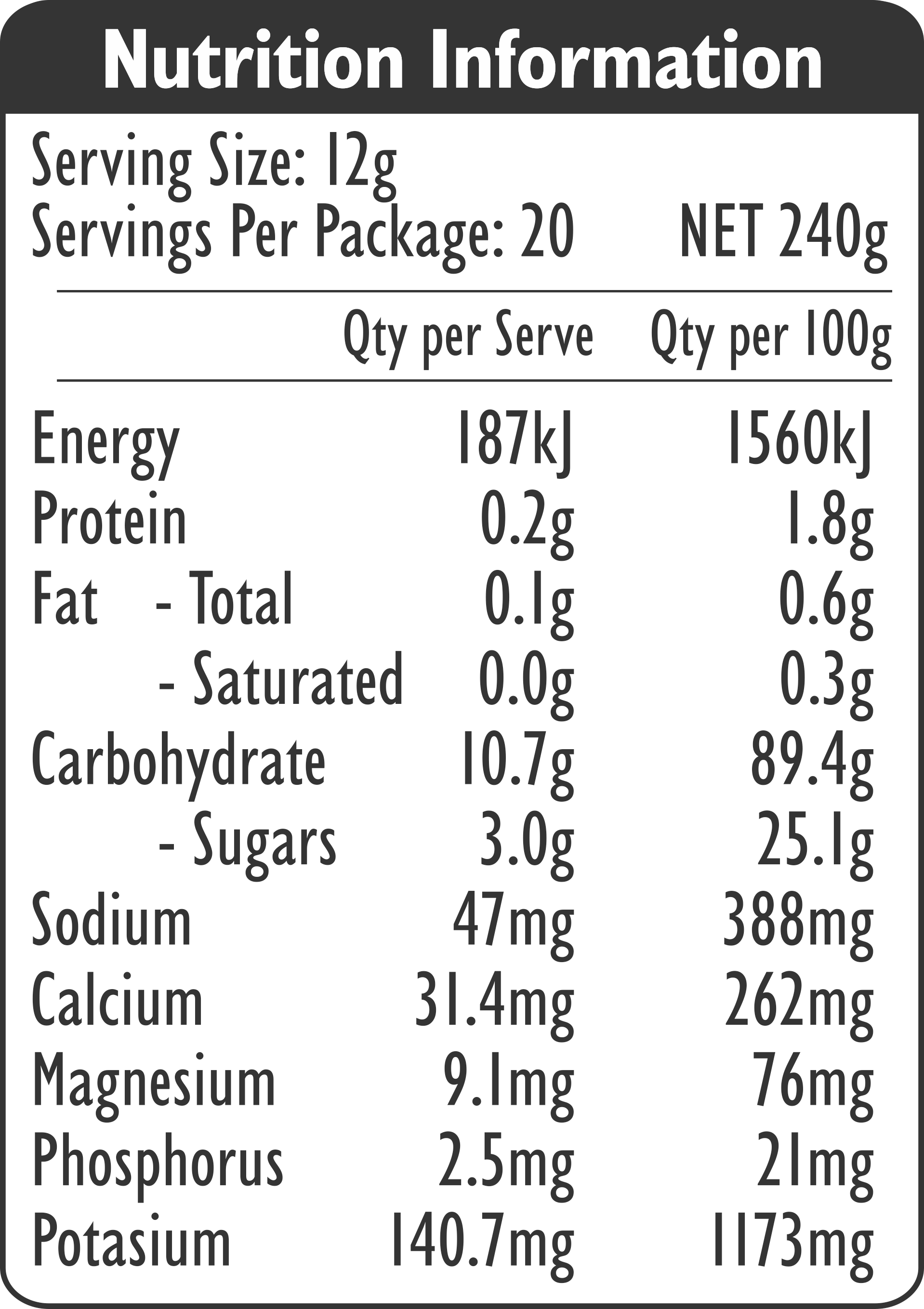39 carbohydrates on nutrition labels
kidshealth.org › en › teensFood Labels (for Teens) - Nemours KidsHealth Food labels provide more than just nutrition facts. They also tell you what's in a packaged food (i.e., the ingredients). People with food allergies need to check ingredient lists to avoid foods that can cause an allergic reaction. Some food labels also state which country the food came from, whether the food is organic, and certain health claims. Food Labels and Counting Carbs - dummies Carbohydrate grams and %Daily Value are listed on the same line on Nutrition Facts labels, as you can see here. Total Carbohydrate is listed in grams. Because %Daily Value is written in bold and off to the right side of the label, and lined up neatly with the actual amount, it is easy to allow your eye to zero in on the %Daily Value rather than ...
Reading Food Labels | ADA - American Diabetes Association The Nutrition Facts labels on foods are really the key to making the best choices. We'll cover the basics so that these labels make shopping easier for you. Get started Understanding Carbs You've heard it all. From carb-free to low-carb, to whole and empty carbs, it's hard to know what it all means. Learn more Food & Blood Sugar

Carbohydrates on nutrition labels
What Is the Difference Between Sugar & Carbs on Food Labels? Each gram of carbohydrate and protein provides 4 calories, while a gram of fat provides 9 calories. Carbohydrates are found in a wide variety of foods, such as grain products, including bread, pasta, breakfast cereals, oatmeal, flours, crackers, starchy vegetables like potatoes and corn, legumes, milk, yogurt, fruits, juices, sugar and desserts. How are Carbohydrates & Dietary Fiber Labelled on Foods? The fibers listed below are the most common sources being added to food and can be declared on the Nutrition Facts label as dietary fiber. FDA approved isolated and synthetic non-digestible carbohydrates Gum Acacia Alginate Apple Fiber Bamboo Fiber Carboxymethylcellulose Corn Hull Fiber Cottonseed Fiber Galactooligosaccharides How to Read Nutrition Labels: Fat Content, Carbs & What To ... - HighKey Total Fat. Nutrition labels are required to include total fat, saturated fat, and trans fat. The total amount of fat in the diet is a percentage of your calorie needs. The recommendation for the typical American diet is around 30%. For someone taking in 2,000 calories, this would mean around 70 grams of total fat per day.
Carbohydrates on nutrition labels. Nutrition declaration - EU labelling rules - Your Europe The nutrition declaration must include the following information: energy value amounts of fat, saturates, carbohydrate, sugars, protein and salt The following nutrients can be indicated voluntarily in the nutrition declaration: mono-unsaturates polyunsaturates polyols starch fibre any of the vitamins or minerals permitted by law Nutrition labelling - Food Safety It must provide the energy value and the amounts of fat, saturates, carbohydrate, sugars, protein and salt of the food. The declaration must be presented in a legible tabular format on the packaging. Where space does not permit it, the information may be presented in linear format. What's the Difference between Carbohydrates & Sugar on Food Labels ... So will include lactose (milk sugar), sucrose, fructose etc. However, on the label, you'll see 'of which sugars' and this is included within the carbohydrate total so don't count it separately. Carbohydrates - 3g Of which sugars - 2.8g For this example, you'd count 3g carbohydrates and the sugar amount of that total is 2.8g. How To Read Nutrition Labels (Like a Pro) - Ditch The Carbs The front of the box states it is high in fibre, cholesterol-lowering and has a 4.5 star rating, but look at the nutrition label and it tells another story. Per ¾ cup serving (and most people serve 1-2 cups) + ½ cup milk = 37.9g carbs, 15.5g sugars. The only reason it has any vitamins is because it has been fortified.
How to Understand and Use the Nutrition Facts Label | FDA Dietary fiber, vitamin D, calcium, iron ad potassium are nutrients on the label that Americans generally do not get the recommended amount of. They are identified as nutrients to get more of.... What is total carbohydrates on a nutrition label? On the label, total carbohydrate contains all three forms of carbohydrate: sugar, starch, and fiber. When calculating carbohydrates or deciding which items to include, it's critical to utilize total grams. The types of carbohydrates in the meal are listed below the Total Carbohydrate (carbs). Sugar is simple carbohydrate. How to Calculate How Many Carbohydrates Per Serving on a Nutrition Label To the right, the label also tells you what percentage of a typical 2,000-calorie diet's recommended intake this satisfies. Multiply the number of grams of carbohydrates per serving by the number of servings you take. For example, if 1 cup of the food provides 30 grams, and you serve yourself 1 1/2 cups, you eat 45 g of carbohydrates. Food Labels | CDC - Centers for Disease Control and Prevention If you eat the whole thing, you are eating 8 times the amount of calories, carbs, fat, etc., shown on the label. Total Carbohydrate shows you types of carbs in the food, including sugar and fiber. Choose foods with more fiber, vitamins, and minerals. Choose foods with lower calories, saturated fat, sodium, and added sugars. Avoid trans fat.
PDF Read the Food Label for Carbohydrates - National Institutes of Health carbohydrates and sweeteners. Here is a food label for a 12-ounce regular soda. The label provides lots of useful information. 1. Serving Size and Number of Servings The serving size is 12 ounces. There's 1 serving in this container. 2. Amount Per Serving The nutrient amounts on the label are for one serving. If you have more than one serving ... Understanding food labels | Diabetes UK Labels on the front don't include the amount of carbs, so check the label on the pack for the total carbohydrate, which includes carbohydrates from starchy food as well as sugars. The figures for sugars on traffic lights are for total sugars, which doesn't tell you how much of the sugar comes from natural sources, such as fructose and how much is added, such as sucrose or glucose. CODEX GUIDELINES ON NUTRITION LABELLING - Food and Agriculture Organization 3.4.6 The presence of available carbohydrates should be declared on the label as "carbohydrates". Where the type of carbohydrate is declared, this declaration should follow immediately the declaration of the total carbohydrate content in the following format: "Carbohydrate... g, of which sugars... g". This may be followed by the following: "x"... g Looking at labels - British Nutrition Foundation 'Carbohydrates' - this includes both starch that you find in bread, pasta, rice and potatoes, and sugars. This includes the sugar you add to coffee, that has been added to food/drinks products by the manufacturer and that found naturally in honey, syrup and fruit juice (free sugars), and the sugars found naturally in fruit and milk.
› articles › 161547Carbohydrates: Uses, health benefits, nutrition, and risks Dec 17, 2020 · Carbohydrates, also known as saccharides or carbs, provide energy for the body. Each gram of carbohydrates provides 4 calories.. The body breaks carbohydrates down into glucose, which is the ...
How to Use the Nutrition Facts Label — Diet Doctor Check the grams of sugar on the nutrition facts label (circled in pink). You'll find this under the total carbohydrate grams, right after the fiber. The "sugars" number includes both naturally occurring sugars (like the fructose found in lemon juice) and added sugars (like the sugar or corn syrup added to some salad dressings).
LABEL READING: CARBOHYDRATES AND SUGARS - Renaissance Nutrition Center ... The label may list as many as six items: Total Carbohydrate. Dietary Fiber. Soluble fiber. Sugars. Sugar alcohols. Other Carbohydrates. Some manufacturers voluntarily include the subcategories of sugar alcohol and "other carbohydrates.". Others do not.
How Do They Calculate Calories on Food Labels? 5 grams of fat (5 x 9 = 45 calories) 22 grams of carbohydrate (22 x 4 = 88 calories) 2 grams of protein (2 x 4 = 8) ...should contain approximately 140 calories. It's important to recognize that 4-9-4 is an average, and not an exact amount.
diabetes.org › healthy-living › recipes-nutritionFruit | ADA - American Diabetes Association Fruit contains carbohydrate so you need to count it as part of your meal plan. Having a piece of fresh fruit or fruit salad for dessert is a great way to satisfy your sweet tooth and get the extra nutrition you're looking for. What are the best choices? The best choices of fruit are any that are fresh, frozen or canned without added sugars.
my.clevelandclinic.org › health › articlesCarbohydrates: Types & Health Benefits - Cleveland Clinic Carbohydrates — fiber, starches and sugars — are essential food nutrients that your body turns into glucose to give you the energy to function. Complex carbs in fruits, vegetables and whole-grain products are less likely to spike blood sugar than simple carbs (sugars).
Low Carb Guide to Understanding Nutrition Labels - Virta Health Sugar should be zero as often as possible (1-2g at most). Fiber is a carb and should be included in your total for the day (initially 30g or less). Again, pay attention to the serving size. Something might be low in carbs, but if you eat 3 or 4 servings, you can easily go over your daily limit. 7.
Food Labels: Carbohydrates | Home & Garden Information Center According to nutrition experts, carbohydrates should provide 45-65% of your total daily calories. That means carbohydrates should supply 900 calories or more in a 2,000-calorie-a-day diet. Facts on Food Labels. Food labels contain clues to a food's carbohydrate content, including the amount per serving.
Reading food labels: Tips if you have diabetes - Mayo Clinic Less than 5 grams of carbohydrates a serving Do the math Pay attention to serving sizes. The serving sizes listed on food labels may be different from the serving sizes in your meal plan. If you eat twice the serving size listed on the label, you also double the calories, fat, carbohydrates, protein, sodium and other ingredients.
Sugars on food labels - Sugar Nutrition Resource Centre Sugars on food labels Carbohydrates are broadly classified into monosaccharides, disaccharides and polysaccharides FIND OUT MORE Monosaccharides and disaccharides are otherwise known as 'sugars' FIND OUT MORE Polys or sugar alcohols are naturally found in some fruits and used commercially in products such as chewing gum FIND OUT MORE
Learning To Read Labels :: Diabetes Education Online When you read food labels, the grams of sugar are already included in the total carbohydrate amount, so you do not need to count this sugar amount separately. The grams of sugar listed include both natural sugars, from fruit or milk, and added sugars. On a nutrition food label, the total carbohydrate includes the sugar. Some Nutrition Facts labels may also list sugar alcohols under total carbohydrate.
How To Figure Out The Carbs On Nutrition Labels Carbs on a label also refer to fiber and the sugars that are the composition of the food — like the natural sugars that are found in fruits, vegetables, grains, and milk. Carbs are the body's main source of fuel — it's the simple added sugars like table sugar and syrups (and the foods that contain them) that give the quick rise and fall in energy levels.
Added Sugars on the New Nutrition Facts Label | FDA The new Nutrition Facts label can help you compare and choose foods that are lower in added sugars. Check the label to see if foods are LOW or HIGH in added sugars. 5% DV or less is a LOW source of...
Nutrition labelling | Food Standards Agency When providing nutrition information, you are required to declare: energy value. amounts of fat, saturates, carbohydrate, sugars, protein and salt. The content of the mandatory nutrition declaration can be supplemented with an indication of the amounts of one or more of the following: monounsaturates. polyunsaturates.
How to Read Nutrition Labels: Fat Content, Carbs & What To ... - HighKey Total Fat. Nutrition labels are required to include total fat, saturated fat, and trans fat. The total amount of fat in the diet is a percentage of your calorie needs. The recommendation for the typical American diet is around 30%. For someone taking in 2,000 calories, this would mean around 70 grams of total fat per day.


:max_bytes(150000):strip_icc()/LabelA2-56a5c0f65f9b58b7d0de5351.jpg)






Post a Comment for "39 carbohydrates on nutrition labels"